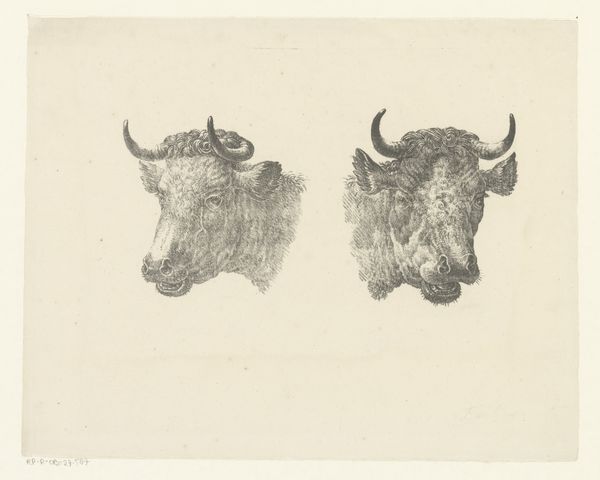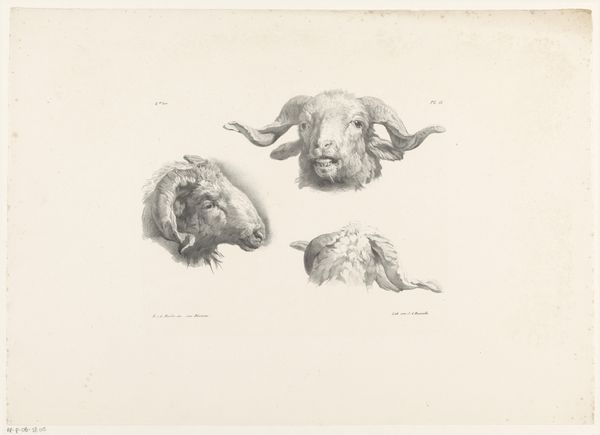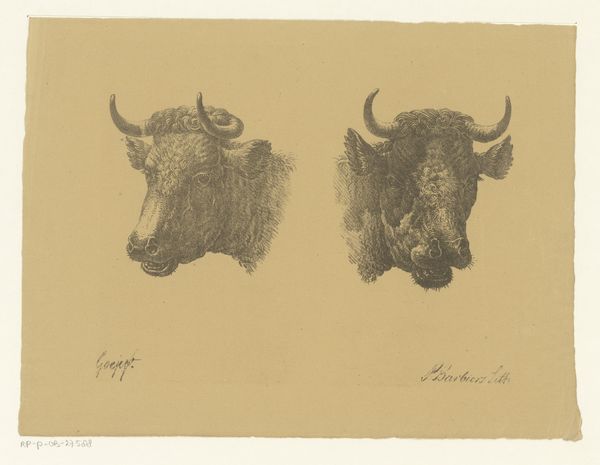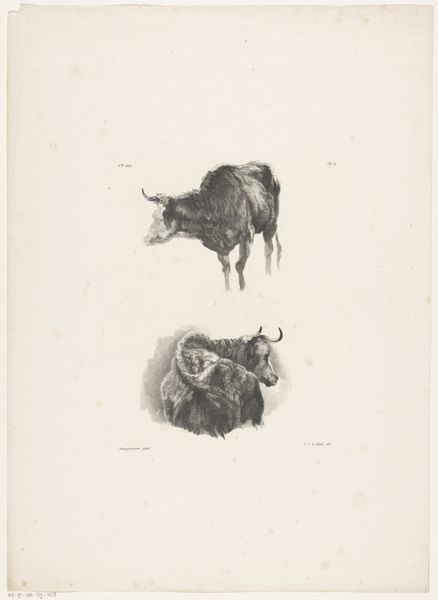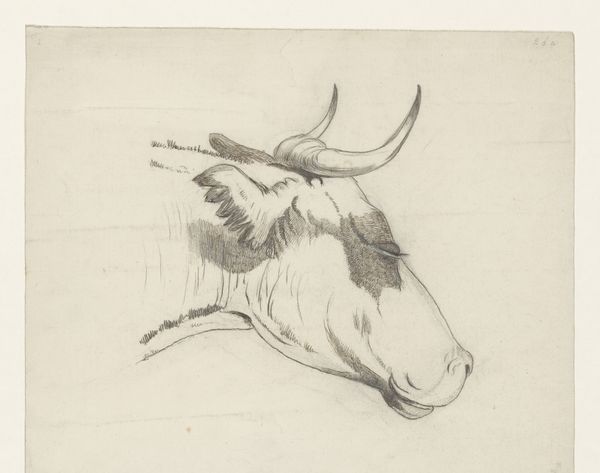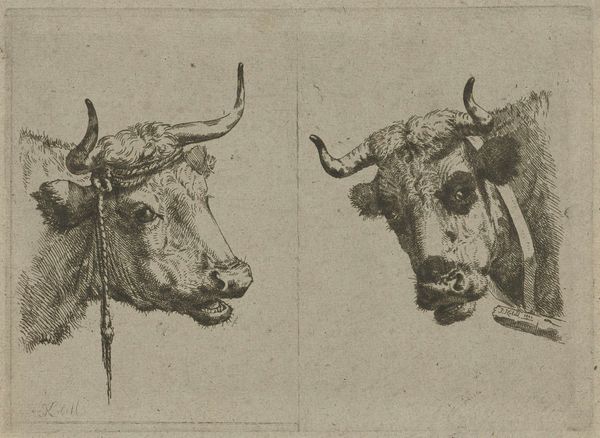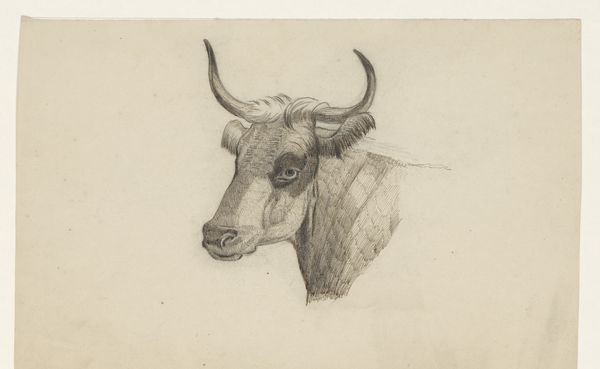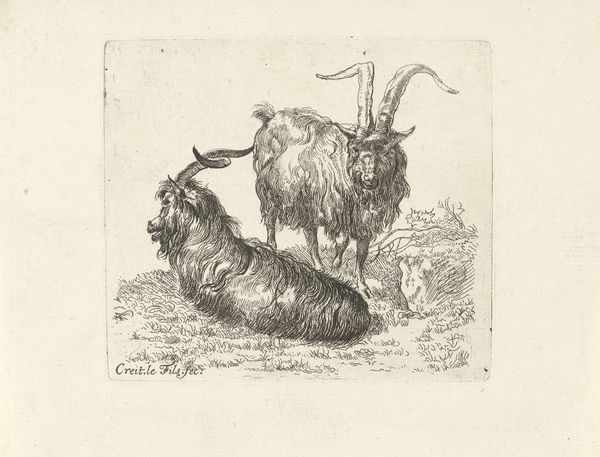
Twee koeienkoppen, de een en face de ander in zijaansicht 1800 - 1841
0:00
0:00
drawing, pencil
#
portrait
#
pencil drawn
#
drawing
#
pencil drawing
#
pencil
#
academic-art
#
realism
Dimensions: height 75 mm, width 145 mm
Copyright: Rijks Museum: Open Domain
Curator: Here we have "Twee koeienkoppen, de een en face de ander in zijaansicht," or "Two Cow Heads, one facing and the other in side view" by Joannes Bemme, created sometime between 1800 and 1841. It’s a delicate pencil drawing held in the collection of the Rijksmuseum. What are your first impressions? Editor: It’s charming, almost disarming. The simplicity of the lines and the direct gaze of one of the cows evokes a sense of quiet observation. The artist has truly captured their essence using just a humble pencil. Curator: Indeed. Bemme clearly demonstrates academic leanings toward realism. What might compel an artist to focus on cattle in this era? Agricultural shifts perhaps? Editor: Possibly. This drawing speaks to the rising status of cattle and land ownership at that time. You can feel the hours of study in those simple pencil strokes and hatch marks; looking closer we see it’s not just capturing the animals but an understanding of how muscle and bone exist together. Curator: And it was, perhaps, an idealized depiction, masking the harsh realities of animal husbandry during this period. Consider the social hierarchy represented, with the landed gentry viewing such animals as symbols of wealth and status. The artwork’s display in institutions like the Rijksmuseum only reinforces these ideas. Editor: I suppose one might ask where the animal’s agency is. Was this art specifically produced for that social strata you mentioned? I do find it compelling that something created in the field from raw material using simple means can translate later to elite tastes and collecting practices. Curator: An astute point! It reflects the complex interplay between artistic creation, social values, and institutional power. This seemingly simple drawing really encapsulates layers of history. Editor: It makes one contemplate labor, value and transformation through the act of representation.
Comments
No comments
Be the first to comment and join the conversation on the ultimate creative platform.
